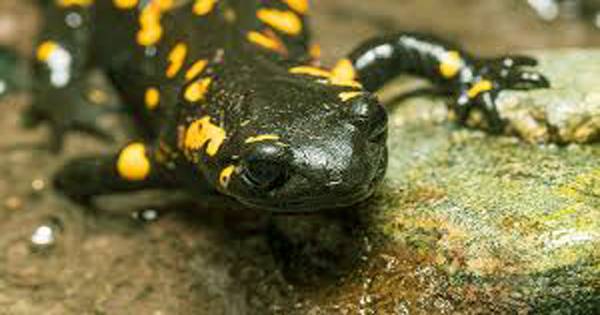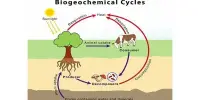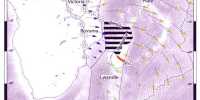Dr. Dev Miller and Dr. Matt Gray lead the Ambivian Disease Laboratory at the University of Tennessee and are adopting a variety of strategies to prevent deadly fungi from entering the United States through the international pet trade for salamanders. The Southern Appalachian Mountains are a global biodiversity hotspot for salamanders. They are conducting research to learn more about the disease and looking for possible strategies to reduce the tendency of fungi to enter the country.
Why there are so many salamanders in the Appalachian Mountains: Temperate conditions and higher altitudes create a forest system with lots of moisture and frozen leaf litter. Over time, this makes it the perfect habitat for salamanders. The southern Appalachian Mountain Range is one of the oldest mountains in the world, so there are many opportunities for evolution for many species over a long period of time.
The intersection of North Carolina, Tennessee, and Georgia is a global biodiversity hot spot for salamanders. Tennessee, for example, has about 60 species, more than the entire continent of Europe.
The fungus that threatens salamanders: The Bsal fungus specifically attacks the outer covering of the skin of salamanders but we can see that it can also attack the skin of frogs. The skin is one of the most important organs in an amphibian body. This is so important because some salamanders do not have lungs and therefore skin is a major source of respiration for them. It also maintains the right amount of hydration so that their body systems, including their heart, can function properly.
Batrachochytrium, or Bisal, is the second chytrid fungus that was discovered. The first chytrid fungus that many have heard of is called Batrachochytrium dendrobatidis, and it has been implicated in the extinction of more than 500 amphibian species worldwide and the extinction of more than 100 species.
The name salamandrivorans literally means it eats salamanders. In fact, it destroys the skin with a fungus coating. The skin stops working and the animal shut down and dies.
This is what steps are being taken to prevent entry into the United States: The US Fish and Wildlife Service passed a ban in 2010 on imports of about 200 species of salamanders that could serve as potential hosts on Bsal. This has effectively stopped the trade of salamanders in our country. The United States was fairly active in Bsal response. This has effectively stopped the trade of salamanders in our country. However, since then we have learned that frogs can also be infected in Brussels, which trades 95%, so the threat of exposure to the United States remains.
What role do salamanders play in this ecosystem?: They take on larvae as well as adults before they bite you or infect zoometric diseases. Both tadpoles and salamander larvae like to eat very nutritious small mosquito larvae. They play the same role as bats in the air. It has been estimated that in a typical pond system both amphibians can take in one million insects a year, including mosquitoes.
The fungus has not yet entered North America, but what was its effect on European amphibians: Now there are studies that indicate that it was probably introduced throughout Germany and spread from there. The discovery of a new citric fungus in northern Europe was very worrying. It was discovered in 2010 and since then the salamander population has been declining across Europe.













